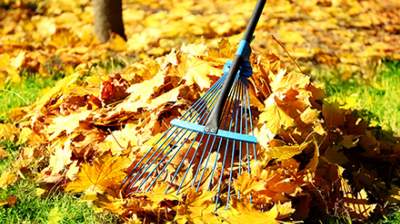A FALL MAINTENANCE GUIDE FOR HOMEOWNERS


A homeowner’s work is never done: now that the hottest days of summer are past, It’s time to prepare your home for the winter months. Every home comes with an endless to-do list, but we’ve focused on the essential maintenance issues that homeowner’s face this time of year. Follow these suggestions to keep your home safe and comfortable for the long haul.
Dead or unhealthy trees and limbs are more likely to snap under stress from wind or snowfall, so consider scheduling an appointment with an arborist, who will prune dead limbs and remove hazardous trees. They’ll also offer advice on how to keep your trees and shrubs healthy.
Some of us have childhood memories of raking and bagging leaves, a tedious job that had to be done every weekend. But why do we do it? Leaves trap moisture in areas you might want to keep dry, and wet leaves make walkways slick and dangerous. Many lawn care experts maintain that a thick layer of leaves can also impede the growth of some grasses. For most homeowners, though, a yard full of leaves simply looks messy.
You can rake or blow leaves into piles, then compost them or bag them for removal. Many homeowners mow them, mulching them into the grass—no back-breaking raking required. If you have a garden, consider spreading mulched leaves over your beds, as the leaves provide nutrients and a weather barrier. Fall is also a good time to plant certain plants and vegetables.
As leaves and debris accumulate in your gutters, they block the flow of water away from your roof, walls, and foundation, causing the potential for water damage like mold and wood rot. Clogged gutters are also a common cause of ice dams on your roof. The good news: cleaning your gutters yourself won’t cost you anything if you’ve got a ladder and some gloves. The bad news: it’s icky.
Keep your plumbing from freezing and breakage by turning off the water supply to the outside and weatherproofing hose bibs and yard spigots. Storing hoses and sprinklers inside improves their lifespan.
If you’re planning on using your fireplace during the colder months, be safe about it: have your chimney inspected and cleaned. As smoke rises through your chimney, it leaves deposits of a chemical called creosote. Creosote buildup can catch fire, damaging the chimney and possibly spreading to the rest of the home. A chimney sweep will inspect your chimney and flue, clearing the creosote and offering guidance on how to minimize fire risk. You can find more information here.
During the winter, cold air can enter the home through gaps around door frames and windows, forcing your heating system to work harder to maintain a cozy temperature.. Properly installed weather stripping reduces drafts and lowers energy costs, plus it’s cheap and easy to do yourself.
Use the test function on all of your smoke and carbon monoxide detectors, and change any batteries. If you haven’t done it before, check the placement and number of smoke detectors in your home. The National Fire Protection Agency (NFPA) recommends that homeowners “install smoke alarms in every bedroom. They should also be outside each sleeping area and on every level of the home.”
If critters can enter, water can enter, too, and if that water freezes, it can cause damage to your home’s exterior or foundation. Examine exterior areas around vents, plumbing, and doors and windows. Gaps in siding can also cause water problems. Caulk, sealant, or even expanding foam can close these spaces to keep your home cozy and pest-free.
For many homeowners in the US, your air conditioner and heating system are connected and use the same interior unit. If that’s the case, you’ll need to check your filter. If you have a disposable filter and can’t remember the last time you changed it, it’s a good idea to switch it out—you’ll probably notice an increase in airflow and heating power. Consider having an HVAC technician perform fall maintenance to keep your heating system performing at its best.
You can clean your dryer vent any time, but experts recommend cleaning it at least once a year, so why not do it when it’s nice outside? To clean the vent, start where the vent exits your home’s exterior. Using a flexible brush, an air compressor, or a vacuum with a brush fitting, remove the lint throughout the length of the vent. It’s a good idea to check for lint behind the dryer, too, since the dryer pulls air from the space behind it as it works.
If that sounds like too much work, you can hire a professional to do it for you. Expect to pay between $89 and $179 for the service.

Coverage not available in CA, WA and HI